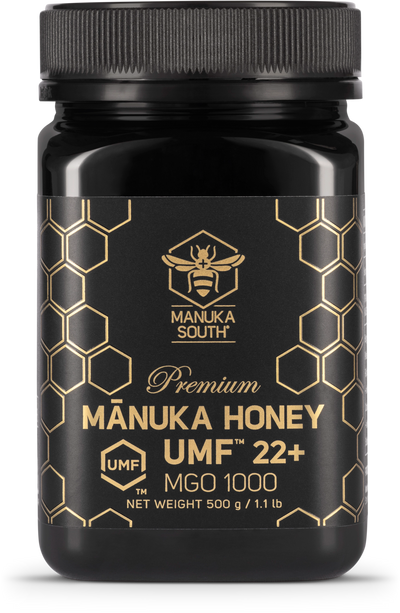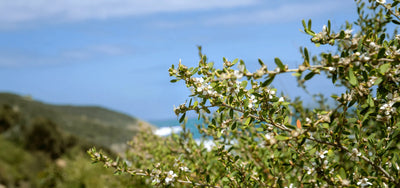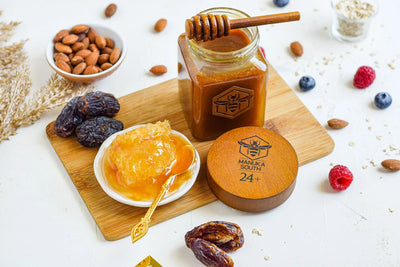Hive to Jar
How Manuka Honey is Made
It takes a skilful hand to create the world's finest honey. We put in the hard work, to make sure every product is just as nature intended. We work alongside skilled beekeepers and artisans to bring all the moving parts together and make the world's most premium manuka honey.
Manuka honey has captured the attention of health enthusiasts and food connoisseurs worldwide, renowned for its distinct flavour, smooth texture, and remarkable health benefits.
In this article, we’ll guide you through manuka honey’s fascinating journey—from the remote locations where the native manuka tree blooms, all the way to the final product that reaches your home. By understanding this journey, you’ll gain insight into why manuka honey stands as one of the world’s most exceptional honeys, and how each step in its production contributes to its distinct quality.
Inside this article about: The Origin of Manuka Honey
- Manuka Honey Origin: Where Does Manuka Honey Come From?
- 01. The NZ Manuka Tree
- 02. The Hive: How is Manuka Honey Made?
- Manuka Honey Production: how is manuka honey produced?
- 03. Extraction
- 04. Maturation
- 05. Creaming
- 06. Testing
- Manuka Honey For All: From Our Shelves to Yours
- 07. Packaging
- 08. Delivery
Manuka Honey Origin Where Does Manuka Honey Come From?
01. The NZ Manuka Tree
The origin of manuka honey lies in the rugged, pristine wilderness of New Zealand, where the native manuka tree (Leptospermum scoparium) thrives. This resilient tree, which grows predominantly in remote areas across the North and South Islands, and for a brief period each year, the mānuka tree produces small, delicate flowers with a potent, earthy aroma. During this flowering window, honeybees gather nectar that will become Manuka honey.
In our relentless pursuit of the most exquisite monofloral honey, we meticulously position our beehives amidst the untouched expanses of New Zealand's remote mānuka forests. These pristine locations, nestled deep within the heart of nature, are often so secluded that access is only possible through the use of helicopters. This strategic placement ensures that our bees gather nectar from the purest floral sources, resulting in a honey of unparalleled quality and authenticity.
The manuka tree itself is an extraordinary plant. Known for its hardy nature, it can withstand harsh conditions, thriving on exposed hillsides, in coastal areas, and in the nutrient-poor soils of New Zealand’s countryside. The limited blooming period, the specific growing regions, and the unique characteristics of the manuka tree all contribute to the rarity and value of manuka honey.
02. The Hive: How is Manuka Honey Made?
It all starts with the colony. Honeybees are social insects that live in colonies that consist of a single queen, hundreds of male drones and up to 80,000 female worker bees. During the short flowering season of the manuka tree, honeybees work tirelessly to collect nectar from the delicate white and pink flowers. This nectar is the raw material that, through the bees' natural process, becomes manuka honey.
The honeybee collects nectar from the mānuka flower and stores the nectar in its honey sac to carry it back home. While the nectar is in the bee’s honey sack, it mixes with enzymes and proteins, which turns the nectar into honey. To thicken the honey, bees put it into the honeycomb and then evaporate the excess water in the honey, using a combination of warming the hive by their combined body heat, and air movement achieved by fanning their wings, and ensuring it reaches the right consistency and quality for long-term storage.
Manuka Honey Production how is manuka honey produced?
03. Extraction
Once the bees have completed their work, the extraction process begins. At this stage, beekeepers step in, the honey-laden frames are then transported to a specialised facility where the honey is extracted. To maintain the integrity of manuka honey, the extraction process avoids excessive heat and harsh filtering. First, the honeycombs are gently spun in an extractor, allowing the honey to flow out naturally without the need for invasive processing. This step is crucial in retaining the honey’s raw and natural state.
Throughout extraction, great care is taken to preserve the honey’s valuable enzymes, antibacterial compounds, and flavour profile. Unlike conventional honey, which may undergo intense filtration and heating, manuka honey from Manuka South is kept as close to its natural state as possible. This dedication to quality is essential to ensuring that every jar of manuka honey captures the purity and benefits associated with authentic New Zealand manuka.
04. Maturation
The raw honey is then poured into drums and our technical department take samples to be sent to independent International Accreditation New Zealand (IANZ) laboratories. We use multi-lab testing throughout the maturing of our honey to guarantee that reliable data is collected.
The unique cellaring of our premium range of honey enables the MGO properties of the mānuka honey to thoroughly develop and mature, and is why Manuka South consistently produce the highest standard honey available. Our premium mānuka honey is carefully matured in temperature-controlled facilities after harvest. This slow, gradual, careful aging respects the qualities of the raw honey and ensures that the natural enzymes are perfectly preserved, just the way nature intended.
05. Creaming
The creaming process is a key step in delivering the smooth, spreadable texture that makes manuka honey so enjoyable. Creaming is a natural technique used to control the crystallisation of honey, giving it a consistent and luxurious texture without altering its raw qualities. Our creamer uses a careful arctician process that avoids using starter honey to initiate the crystallization process, ensuring that only premium Manuka Honey is present.
During creaming, our manuka honey is slowly stirred under specific conditions for around three days to create fine, uniform crystals. This gentle process prevents the honey from forming large, coarse crystals, which would otherwise give it a gritty texture. By carefully managing the creaming process, it preserves the honey's natural enzymes, beneficial compounds, and flavour while achieving a silky, smooth consistency. This quality texture adds to the premium experience, enhancing every spoonful with both a satisfying mouthfeel and the full spectrum of manuka honey’s unique benefits.
06. Testing
To guarantee the authenticity and potency of Manuka honey, each batch undergoes rigorous testing, a process essential for ensuring the highest quality and verifying the honey’s unique properties. Manuka honey is widely valued for its antibacterial and health-promoting qualities, which are scientifically measured and certified using the Unique Manuka Factor (UMF™) grading system.
Testing begins with an analysis of the honey’s key chemical markers, including methylglyoxal (MGO), a natural compound responsible for much of Manuka honey’s antibacterial activity. The higher the MGO levels, the more potent the honey’s therapeutic effects. Additionally, dihydroxyacetone (DHA) and leptosperin are analysed to confirm the honey’s genuine manuka origin and shelf life.
Only honey that meets strict criteria is awarded a UMF™ rating, ranging from UMF 5+ to UMF 35+, with higher numbers indicating stronger, more concentrated beneficial properties. This certification assures consumers that they are receiving genuine manuka honey, supported by the highest standards in quality and transparency. At Manuka South, our commitment to quality means that all of our Manuka honey is UMF™-certified, delivering a product that is not only luxurious but scientifically verified for its health benefits.
We ensure that all our honey meets the strict MPI Chemical and DNA criteria for mono-floral Manuka honey. This thorough testing process is vital for providing customers with confidence in the purity, potency, and authenticity of each jar of Manuka South honey. Every batch of our honey can be checked on our Batch Authenticity page to confirm its UMF™ certificate and test results.
Manuka Honey For All From Our Shelves to Yours
07. Packaging
Once the Manuka honey has been carefully matured, creamed, and tested, it reaches the final step before making its way to consumers: packaging. At Manuka South, we believe that exceptional honey deserves packaging that reflects its premium nature. Each jar of Manuka honey is handled with the same attention to detail that defines every stage of its production. We use eco-friendly materials in our packaging, incorporating rPET (recycled PET plastic) for our black jars and recycled glass for our glass jars, ensuring our commitment to sustainable practices.
Packaging plays a crucial role in maintaining the honey’s integrity. To protect the natural properties of Manuka honey, we use high-quality, food-safe jars that shield it from light and air exposure. This careful approach prevents any degradation, ensuring that the honey retains its potent health benefits and authentic flavour from the time it’s sealed until it’s opened.
08. Delivery
After careful production and packaging, Manuka honey embarks on the final leg of its journey—from our facilities in New Zealand to customers around the world. At Manuka South, we are committed to ensuring that every jar of our premium honey arrives in perfect condition, allowing consumers to experience its pure, unaltered quality no matter where they are.
Through every step of the delivery process, our goal is to provide a seamless, reliable experience, allowing customers worldwide to enjoy the premium quality of New Zealand’s finest manuka honey.


UMF 32+ Certified MGO 1835 Mānuka Honey
Buy Today


UMF 20+ Certified MGO 826 Manuka Honey
Buy Today


UMF 15+ Certified MGO 512 Manuka Honey
Buy Today


UMF 22+ Certified MGO 1000 Manuka Honey
Buy Today
Further Reading





